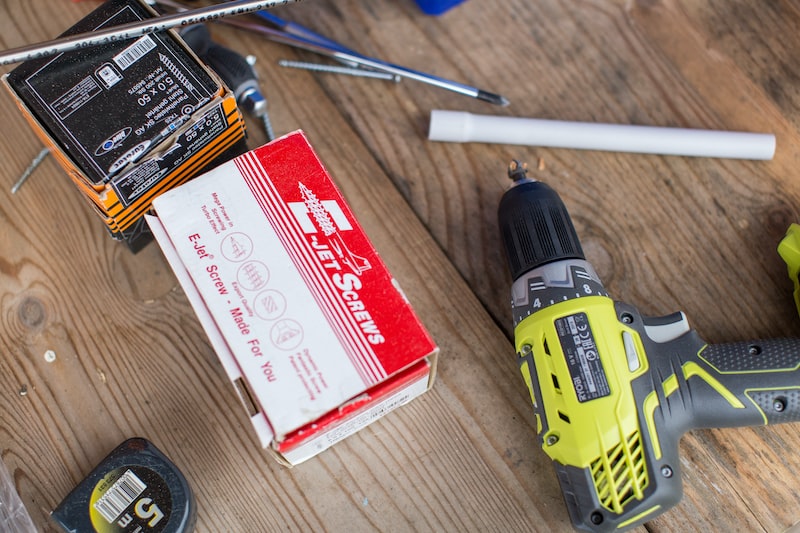Table of Contents
When it comes to woodworking, one cannot overlook the strength and reliability of dowel joints. These unassuming wooden pegs play a crucial role in joining two pieces of wood together, offering a sturdy and durable connection. In this detailed analysis, we will delve into the intricacies of dowel joints and explore why they are considered a go-to method for woodworkers.
Dowel joints are formed by inserting cylindrical rods, known as dowels, into corresponding holes drilled in the adjoining pieces of wood. The dowels are typically made from hardwood, such as oak or maple, chosen for their strength and stability. This method provides an alternative to using screws or nails, offering several advantages.
One of the key strengths of dowel joints lies in their ability to distribute stress evenly across the joint surface. Unlike other fastening methods that rely on a single point of connection, dowel joints create multiple contact points along the length of the dowels. This distributes the load, preventing concentrated stress that could weaken the connection over time.
Another benefit of dowel joints is their resistance to lateral displacement. The cylindrical shape of the dowels prevents the connected pieces from moving side to side, ensuring a tight and secure fit. This makes dowel joints particularly suitable for applications where stability is essential, such as constructing cabinets, chairs, or tables.
Furthermore, dowel joints offer aesthetic appeal along with their structural strength. Because the dowels are hidden within the wood, they provide a seamless and clean finish, free from visible screws or nails. This makes dowel joints ideal for projects that require a visually pleasing outcome.
dowel joints are a reliable and robust method for joining wood. Their ability to distribute stress evenly, prevent lateral displacement, and deliver an aesthetically pleasing finish make them highly desirable for woodworking projects. Whether you’re a professional woodworker or a
passionate DIY enthusiast, incorporating dowel joints into your creations can elevate the strength and longevity of your wooden structures. So next time you’re working on a woodworking project, consider harnessing the power of dowel joints for a lasting and impressive result.Unlocking the Secrets: Exploring the Hidden Strength of Dowel Joints
When it comes to woodworking, there is an age-old technique that has stood the test of time: dowel joints. These unassuming wooden pegs may seem simple, but they possess hidden strength that can transform your woodworking projects from ordinary to extraordinary.
So, what exactly are dowel joints? Imagine them as the connectors that bring two pieces of wood together in a sturdy and seamless manner. Instead of relying solely on screws or nails, dowel joints offer an elegant alternative. By drilling matching holes into the adjoining pieces of wood and inserting dowels, you create a bond that is not only visually pleasing but also remarkably strong.
The real beauty lies in the intricacy of this technique. Dowel joints distribute the load evenly between the connected pieces, ensuring enhanced stability. This characteristic makes them ideal for a wide range of woodworking projects, including furniture, cabinets, and frames. From holding together sturdy table legs to reinforcing delicate chair backs, dowel joints provide structural integrity that withstands the test of time.
One of the key advantages of dowel joints is their ability to resist lateral forces. Unlike other fastening methods that rely on friction or adhesives alone, dowels prevent twisting or pulling apart, making them suitable for heavy-duty applications. Whether you’re constructing a bookshelf or a bed frame, the hidden strength of dowel joints adds durability and longevity to your creations.
Moreover, dowel joints offer an aesthetically pleasing finish. With no visible screws or nails, your woodworking projects exude a clean and polished look. The absence of external fasteners allows the natural beauty of the wood to shine through, captivating anyone who lays eyes on your craftsmanship.
dowel joints are a valuable tool in the arsenal of any woodworking enthusiast. Their hidden strength, even load distribution, resistance to lateral forces, and impeccable finishing make them an excellent choice for projects of all sizes. So, the next time you embark on a woodworking adventure, consider unlocking the secrets of dowel joints and witness the transformative power they bring to your creations.
Building Bridges: How Dowel Joints Reinforce Structural Integrity
When it comes to constructing durable and sturdy bridges, engineers employ a variety of techniques to ensure structural integrity. One such technique that has been employed for centuries is the use of dowel joints. These ingenious connectors play a crucial role in reinforcing the strength and stability of bridge structures, allowing them to withstand heavy loads and the test of time.
Dowel joints, also known as alignment joints, act as connectors between two pieces of wood or other materials. They consist of cylindrical wooden pegs or metal rods that are inserted into accurately drilled holes in the adjoining components. Once in place, the dowels create a secure bond, effectively distributing the load and preventing movement or separation of the joined parts.
The beauty of dowel joints lies in their simplicity and effectiveness. By evenly distributing the forces acting on a bridge, they help to reduce stress concentrations at critical points, enhancing overall structural integrity. This makes dowel joints particularly valuable in areas of high tension or compression within a bridge, where additional reinforcement is needed.
Think of dowel joints as the glue that holds everything together. Just like the locks on a suspension bridge, they provide that extra layer of support, ensuring that each component is tightly connected and capable of withstanding immense pressure. Without dowel joints, bridges would be much more vulnerable to deformation, warping, or even collapse under heavy loads.
Moreover, dowel joints offer benefits beyond their structural advantages. They are easy to construct, requiring minimal tools and expertise. This makes them a cost-effective solution for bridge construction projects, saving both time and resources. Additionally, dowel joints allow for flexibility during assembly and disassembly, making maintenance and repairs more manageable, ultimately increasing the lifespan of the bridge.
Breaking the Norms: Dowel Joints Challenge Traditional Joinery Techniques
Are you tired of the same old joinery techniques? Looking to break free from tradition and explore new possibilities? Well, look no further, because dowel joints are here to challenge the norms of traditional joinery techniques. In this article, we will delve into the fascinating world of dowel joints and discover why they are gaining popularity among craftsmen and DIY enthusiasts.
So, what exactly are dowel joints? Picture this: you have two pieces of wood that you want to connect securely. Instead of relying on screws, nails, or the conventional mortise and tenon joint, you can use dowels. Dowels are small cylindrical rods typically made of wood or metal that are inserted into corresponding holes drilled in the wood. When glued and clamped together, the dowels create a strong and durable joint.
One of the main advantages of dowel joints is their simplicity. Unlike complex joinery techniques that require intricate cuts and measurements, dowel joints are relatively straightforward to execute. With some basic woodworking skills and the right tools, you can create dowel joints with ease. This accessibility makes dowel joints an attractive option for novices and seasoned craftsmen alike.
But don’t let their simplicity fool you. Dowel joints offer impressive strength and stability. The multiple dowels distributed along the joint surface provide a larger glue area, resulting in a robust connection. This strength makes dowel joints suitable for a wide range of applications, from simple furniture assembly to structural frameworks.
Furthermore, dowel joints allow for disassembly and reassembly without compromising their integrity. If you ever need to move or modify your creation, you can simply remove the dowels, make the necessary adjustments, and reassemble the pieces. This flexibility sets dowel joints apart from other permanent joinery methods.
Stronger Together: The Power of Dowel Joints in Woodworking
Are you ready to unlock the secret to creating sturdy and long-lasting wooden structures? Look no further than the mighty dowel joint. In the world of woodworking, dowel joints are a powerful force that brings pieces of wood together with remarkable strength and durability. Let’s dive into the details and discover why these joints are truly game-changers.
So, what exactly is a dowel joint? Imagine two pieces of wood perfectly aligned, held together not by screws or nails, but by small cylindrical rods called dowels. These dowels are inserted into precision-drilled holes in both pieces, creating a bond that is as tight as can be. The result? A joint that can withstand significant stress and strain.
One of the greatest advantages of dowel joints is their ability to distribute weight evenly across multiple points, making them ideal for heavy-duty applications. This even distribution of load minimizes the risk of weak spots or stress concentration, ensuring the overall stability of the structure. Whether you’re building a cabinet, table, or even a bed frame, dowel joints provide the reliability needed for long-lasting results.
Another noteworthy benefit of dowel joints is their resistance to shear forces. Due to the snug fit of the dowels within the drilled holes, these joints effectively resist lateral movement, providing exceptional rigidity. This makes them particularly useful in constructing furniture or objects that may experience movement or vibration.
But it doesn’t stop there! Dowel joints are also renowned for their ease of use and versatility. They require minimal tools and can be created by woodworkers of all skill levels. Plus, they allow for disassembly and reassembly if needed, making repairs or modifications hassle-free.





